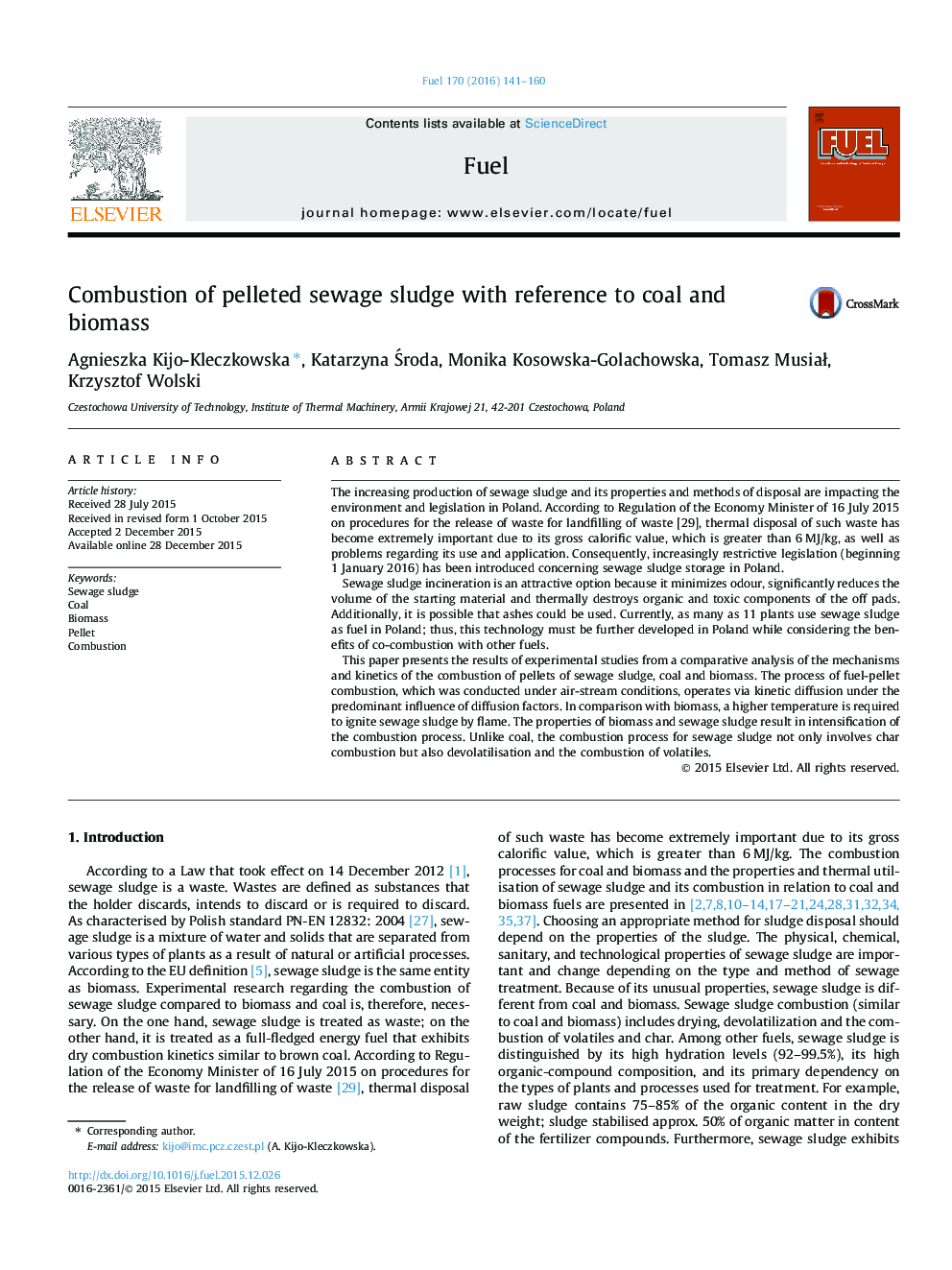| Article ID | Journal | Published Year | Pages | File Type |
|---|---|---|---|---|
| 205297 | Fuel | 2016 | 20 Pages |
The increasing production of sewage sludge and its properties and methods of disposal are impacting the environment and legislation in Poland. According to Regulation of the Economy Minister of 16 July 2015 on procedures for the release of waste for landfilling of waste [29], thermal disposal of such waste has become extremely important due to its gross calorific value, which is greater than 6 MJ/kg, as well as problems regarding its use and application. Consequently, increasingly restrictive legislation (beginning 1 January 2016) has been introduced concerning sewage sludge storage in Poland.Sewage sludge incineration is an attractive option because it minimizes odour, significantly reduces the volume of the starting material and thermally destroys organic and toxic components of the off pads. Additionally, it is possible that ashes could be used. Currently, as many as 11 plants use sewage sludge as fuel in Poland; thus, this technology must be further developed in Poland while considering the benefits of co-combustion with other fuels.This paper presents the results of experimental studies from a comparative analysis of the mechanisms and kinetics of the combustion of pellets of sewage sludge, coal and biomass. The process of fuel-pellet combustion, which was conducted under air-stream conditions, operates via kinetic diffusion under the predominant influence of diffusion factors. In comparison with biomass, a higher temperature is required to ignite sewage sludge by flame. The properties of biomass and sewage sludge result in intensification of the combustion process. Unlike coal, the combustion process for sewage sludge not only involves char combustion but also devolatilisation and the combustion of volatiles.
